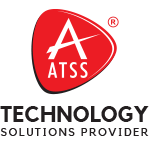AUTOMATION
Asset Tracker
Are You Losing Track of Your Most Valuable Assets?
Asset Tracking Solutions - Every minute an asset goes untracked, businesses lose time, money, and peace of mind. What if you could pinpoint the exact location of any equipment, tool, or vehicle in real time, without endless manual checks?
Here's the bold truth: An Asset Tracker can revolutionize how you manage and monitor physical assets using smart technologies like RFID tagging, GPS, and BLE.
This guide reveals how modern asset tracking works, why it matters, and how your business can benefit.
What is an Asset Tracker?
An Asset Tracker is a system that allows businesses to monitor the location, movement, condition, and usage of their physical assets. These assets include machinery, tools, vehicles, IT equipment, inventory, furniture, and even personnel.
The core of an Asset Tracker system includes:- RFID tags or labels
- GPS trackers
- BLE (Bluetooth Low Energy) beacons
- Asset tracking software with real-time dashboards
These tools work together to automate the identification, monitoring, and management of valuable assets across various environments.
Why You Need an Asset Tracker Now
Time-consuming audits, misplaced equipment, and theft can derail operations. Without real-time visibility, companies suffer from:
- High replacement costs
- Manual tracking errors
- Delayed project timelines
Using an Asset Tracker eliminates guesswork. It gives decision-makers accurate, real-time data that helps improve productivity, save money, and enhance asset utilization.
Core Benefits of an Asset Tracker
Real-Time Visibility with RFID Tagging
RFID tagging allows for quick identification of assets without a direct line of sight. Each RFID tag stores a unique ID that can be scanned and read using handheld or fixed readers.
This ensures:- Faster audits
- Automated inventory control
- Accurate location tracking
Improved Operational Efficiency
With live data from GPS and BLE devices, an Asset Tracker helps optimize:
- Equipment usage
- Asset allocation
- Maintenance schedules
Reduced Loss and Theft
RFID tags and GPS trackers provide location-based alerts when an asset leaves a defined zone. This helps:
- Prevent unauthorized movement
- Reduce theft and misplacement
- Increase accountability among staff
Scalable Across Industries
From hospitals and warehouses to construction and education, asset tracking can be tailored to your industry needs.
Use Cases:- Hospitals tracking medical devices
- Construction sites monitoring tools
- Educational institutions tagging laptops and tablets
Technologies Powering Asset Tracker Systems
1. RFID (Radio-Frequency Identification)
RFID is one of the most popular technologies in asset tracking. Passive RFID tags are cost-effective and ideal for bulk tracking. Active RFID tags, though more expensive, provide real-time location data over longer ranges.
2. GPS
GPS is essential for tracking mobile assets such as vehicles or shipping containers. It provides precise outdoor tracking with global reach.
3. BLE (Bluetooth Low Energy)
BLE beacons help track assets in indoor environments where GPS might fail. They are perfect for hospitals, warehouses, and office spaces.
4. Barcodes and QR Codes
For smaller businesses, barcode or QR-based systems provide a budget-friendly way to track fixed assets using mobile devices.
Implementing an Asset Tracker: What You Need
Assess Your Requirements
- Number of assets
- Type of assets
- Tracking environment (indoor/outdoor)
Choose the Right Technology
Depending on your needs, combine RFID tagging, GPS, and BLE.Set Up Asset Tracking Software
Look for a solution that includes:- Mobile compatibility
- Cloud access
- Real-time dashboards
- Alerts and reporting tools
Train Your Team
Ensure your staff knows how to use scanners, tags, and software to maintain data accuracy.Common Challenges (and How to Overcome Them)
Challenge 1: High Initial Cost
Solution: Start with a hybrid model using RFID and QR codes to manage expenses.Challenge 2: Resistance to Change
Solution: Highlight the time and cost savings to encourage adoption.Challenge 3: Data Overload
Solution: Use dashboards and filters to prioritize only critical data.Real-World Impact of an Asset Tracker
Construction Company Reduces Tool Loss by 40%
By deploying RFID tagging, a mid-sized construction company reduced tool losses by 40% and cut down project delays by 20%.
Hospital Improves Equipment Availability
A multi-specialty hospital used BLE beacons to locate infusion pumps and wheelchairs instantly, saving nurses up to 3 hours per shift.
How Asset Tracker Aligns with Your Business Goals
- Cost Optimization: Reduce asset redundancy and rental costs
- Regulatory Compliance: Keep accurate records for audits
- Customer Satisfaction: Deliver projects on time with available assets
Final Thoughts: Why Wait to Take Control?
An Asset Tracker doesn't just show you where things are — it transforms how your business operates. Whether you run a hospital, factory, or fleet, asset tracking helps you work smarter, not harder.
With RFID tagging, real-time GPS data, and user-friendly software, you get full control over your assets, reduce losses, and improve efficiency.
Don’t wait for assets to go missing — take charge today.

 Automatic Door
Automatic Door Bell Timer
Bell Timer Canteen Management
Canteen Management Central Vacuum Cleaner
Central Vacuum Cleaner Garage Door
Garage Door Gate Automation
Gate Automation Home Automation
Home Automation Home Theatre
Home Theatre Hotel Door Lock
Hotel Door Lock Smart Lights
Smart Lights Nurse Call System
Nurse Call System Occupancy Sensor
Occupancy Sensor Smart Lock
Smart Lock Smart Parking System
Smart Parking System Visitor Management
Visitor Management Wireless Communication
Wireless Communication